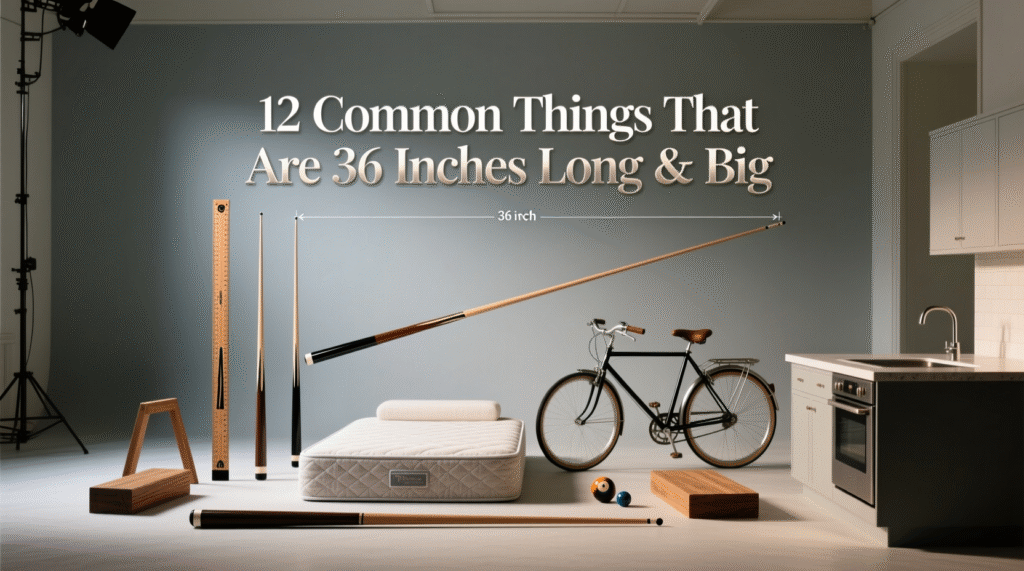Picture this: you’re standing in your kitchen, trying to figure out if that new countertop appliance will fit in the designated space, or perhaps you’re at a furniture store wondering whether that coffee table will work in your living room. In moments like these, having a mental reference for common measurements becomes invaluable. The 36-inch measurement, equivalent to three feet or one yard, appears more frequently in our daily lives than you might realize. From the height of kitchen counters to the width of standard doors, this particular dimension has become a cornerstone in design, manufacturing, and construction standards across numerous industries.
Understanding the 36-inch measurement isn’t just about numbers on a tape measure it’s about developing spatial intelligence that helps you navigate everything from home improvement projects to selecting the right equipment for your hobbies. Whether you’re a homeowner, a professional tradesperson, or simply someone who wants to better understand the world around them, recognizing objects that measure 36 inches can save you time, money, and frustration in countless situations.
How Long is 36 Inches?
To put 36 inches into perspective, imagine three standard rulers placed end to end, or visualize the height from the floor to a typical kitchen counter. This measurement equals exactly one yard or three feet, making it a fundamental unit in both imperial measurements and practical applications. In metric terms, 36 inches converts to approximately 91.44 centimeters or just over 0.91 meters. This length spans roughly the distance from your fingertips to your opposite shoulder when you extend your arm sideways, though this can vary based on individual height and arm span.
1. Kitchen Counter Height
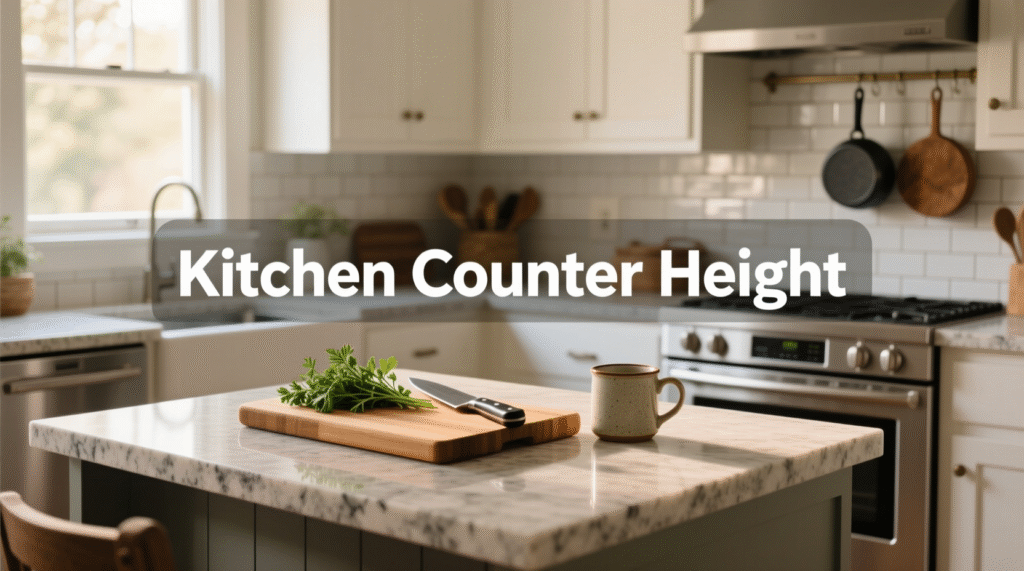
Walk into virtually any modern kitchen, and you’ll encounter one of the most standardized 36-inch measurements in residential design: the height of base cabinets and countertops. This dimension has become the gold standard in kitchen design, carefully calculated to accommodate the average adult’s working height while preparing meals.
The 36-inch counter height represents decades of ergonomic research and practical experience. Cabinet manufacturers worldwide have adopted this measurement because it provides comfortable working conditions for tasks ranging from chopping vegetables to kneading dough. However, modern kitchen design has begun incorporating adjustable heights and island counters that may vary from 34 to 38 inches to accommodate different users and functions.
This standardization extends beyond convenience it affects everything from appliance compatibility to resale value. When you purchase a dishwasher, range, or built-in microwave, manufacturers design these appliances assuming your counters follow the 36-inch standard. Deviating from this height can complicate installations and potentially impact your home’s marketability.
Fascinating Fact: The 36-inch kitchen counter standard emerged in the early 20th century when manufacturers studied the anthropometric data of American adults. Interestingly, as the average height of the population has increased over the past century, some designers now advocate for slightly taller counters, though the 36-inch standard remains dominant due to its widespread adoption.
2. Standard Interior Door Width
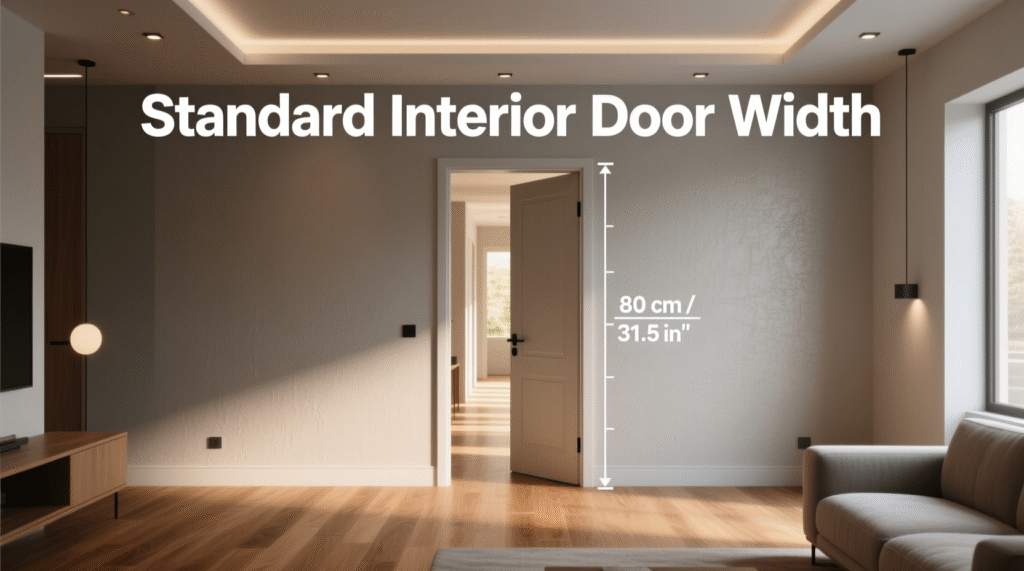
The typical residential interior door measures 36 inches in width, a dimension that has become virtually universal in home construction. This measurement provides adequate clearance for furniture moving, wheelchair accessibility, and comfortable daily passage while maximizing the structural integrity of walls.
Building codes in most regions specify minimum door widths, and the 36-inch standard exceeds these requirements while remaining cost-effective for builders and homeowners. This width accommodates most furniture pieces, from mattresses and dressers to refrigerators and washing machines, making home maintenance and room rearrangements significantly easier.
The 36-inch door width also plays a crucial role in emergency egress and accessibility compliance. The Americans with Disabilities Act (ADA) requires doorways to have a minimum clear width of 32 inches when the door is open 90 degrees, making the 36-inch door an ideal choice for universal design principles.
Interesting Detail: Door width standards vary globally, with European doors often measuring closer to 32 inches (80 centimeters) as standard. The American preference for 36-inch doors reflects both the larger average room sizes in North American homes and different building traditions that prioritize spaciousness and accessibility.
3. Yardstick Length
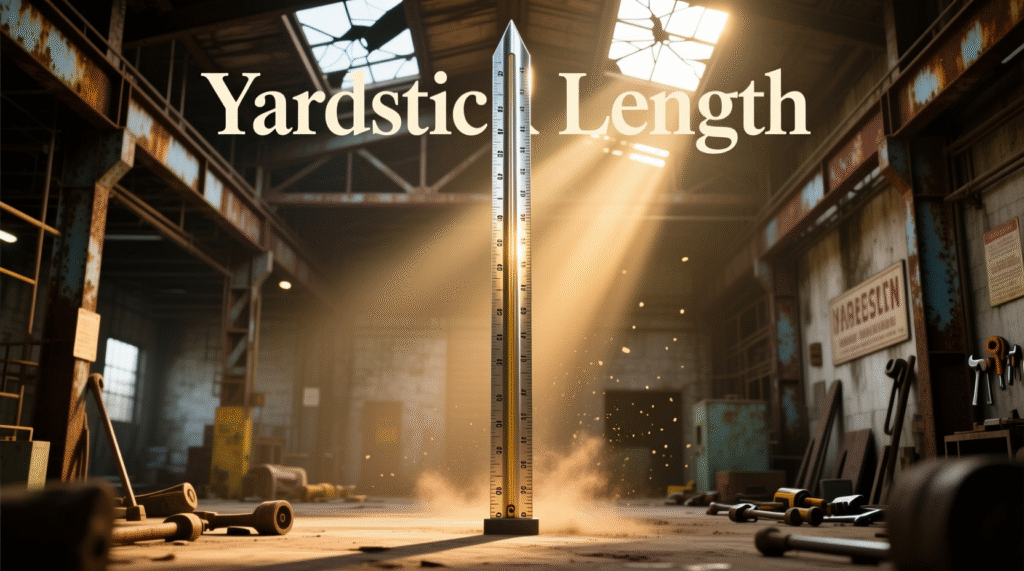
The humble yardstick represents one of the most literal examples of a 36-inch measurement, serving as a fundamental measuring tool that has remained virtually unchanged for centuries. Originally based on the length of a man’s arm from fingertip to nose, the yard has evolved into a precisely standardized unit that equals exactly 36 inches.
Modern yardsticks find applications far beyond simple length measurement. Educators use them for geometry lessons, quilters rely on them for fabric cutting, and contractors employ them for quick measurements where precision isn’t critical. The rigid wooden or metal construction makes yardsticks ideal for drawing straight lines and checking alignments in various projects.
The durability and simplicity of yardsticks have made them indispensable in many professions. Unlike flexible tape measures, yardsticks won’t sag or bend during measurement, making them perfect for architectural drafting, pattern making, and any application requiring a straight edge combined with measurement capability.
Historical Note: The yard measurement dates back to medieval England, where King Henry I allegedly defined it as the distance from his nose to his outstretched thumb. While this origin story may be apocryphal, it illustrates how ancient measurements were often based on human body proportions, eventually standardized into the precise 36-inch measurement we use today.
4. Baseball Bat Length (Youth League)

Youth baseball bats designed for Little League and similar organizations typically measure 36 inches in length, representing the maximum allowed size for most junior competitions. This standardization ensures fair play while accommodating the physical development and strength levels of young athletes.
The 36-inch length strikes an optimal balance between bat speed and plate coverage for developing players. Longer bats provide greater reach and potential power but become increasingly difficult for younger players to control effectively. Manufacturers design these bats with lighter materials and weight distributions that complement the 36-inch length.
Professional baseball scouts often track how young players handle 36-inch bats as an indicator of their potential progression to longer, heavier equipment. The transition from 36-inch youth bats to adult-length bats (typically 32-34 inches but heavier) represents a significant milestone in a player’s development.
Sports Trivia: Despite being shorter than adult bats, some 36-inch youth bats have been involved in record-breaking performances. The longest home run ever recorded in Little League World Series history was hit with a 36-inch bat, traveling an estimated 300 feet remarkable considering the smaller field dimensions and the young age of the players.
5. Standard Desk Height
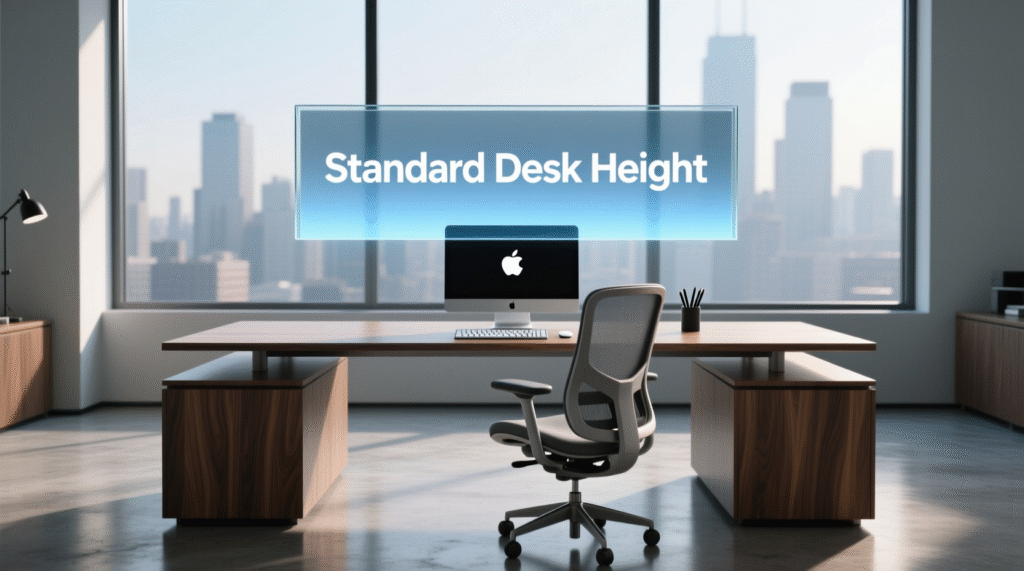
Office desks, writing tables, and computer workstations typically measure between 28-30 inches in height, but many desk surfaces, including the top of pedestals and hutch components, reach the 36-inch mark. This dimension has become particularly relevant as standing desk conversions and adjustable workstations gain popularity in modern workplaces.
The 36-inch height works exceptionally well for standing desk applications, accommodating users between 5’6″ and 6’2″ in height when properly configured with anti-fatigue mats and ergonomic accessories. This versatility has made 36-inch surfaces increasingly common in offices that prioritize worker health and productivity.
Furniture manufacturers often design modular office systems with components that reach exactly 36 inches, allowing for consistent sight lines and professional appearance in open office environments. This standardization simplifies space planning and ensures compatibility between different furniture pieces and manufacturers.
Workplace Insight: Research shows that alternating between sitting and standing throughout the workday can improve productivity and reduce health risks associated with prolonged sitting. The 36-inch height has emerged as optimal for many standing work applications, leading some companies to standardize this measurement across their office furniture specifications.
6. Golf Club Length (Driver)

Many golf drivers, particularly those designed for average-height male golfers, measure approximately 36 inches from grip to clubhead. This length represents a careful balance between swing speed, control, and distance potential that has evolved through decades of equipment innovation and player feedback.
The 36-inch driver length allows most golfers to achieve maximum clubhead speed while maintaining reasonable accuracy. Longer drivers can generate more distance but become increasingly difficult to control, while shorter drivers sacrifice potential yardage. Professional club fitters often use 36 inches as a starting point when customizing equipment for individual players.
Modern driver technology has pushed the boundaries of what’s possible with a 36-inch club, incorporating advanced materials and aerodynamic designs that maximize performance within this established length parameter. Tour professionals and equipment manufacturers continue to refine designs around this proven dimension.
Golfing Fact: The United States Golf Association (USGA) limits driver length to 48 inches maximum, but statistical analysis shows that most golfers achieve optimal performance with clubs closer to 36 inches. Interestingly, some of the longest drivers on professional tours use clubs shorter than 36 inches, prioritizing accuracy and consistency over maximum theoretical distance.
7. Typical Shower Curtain Width (for Small Tubs)
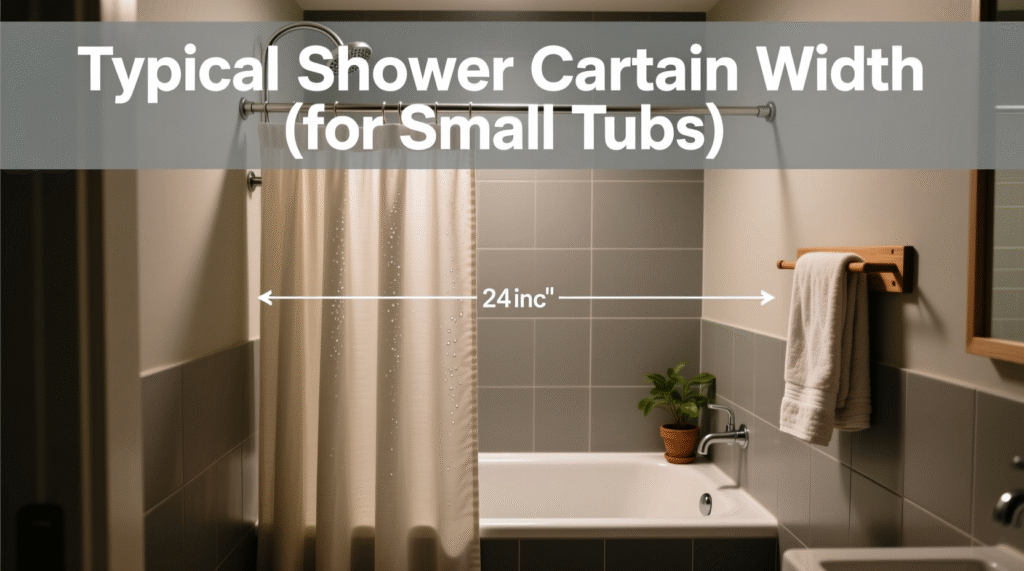
Compact bathroom layouts often feature shower curtains that measure 36 inches in width, designed specifically for smaller bathtub installations and corner shower units. While 72-inch curtains dominate the market for standard tubs, the 36-inch size serves an important niche in space-efficient bathroom designs.
These narrower curtains work particularly well in guest bathrooms, studio apartments, and vintage homes where original fixtures may not conform to modern size standards. The 36-inch width provides adequate coverage while avoiding the bunching and excess material that can make small bathrooms feel even more cramped.
Manufacturers produce these specialty curtains in various materials and designs, recognizing that smaller bathrooms shouldn’t compromise on style or functionality. The 36-inch size often pairs with specific hardware systems designed for compact spaces, including curved rods that maximize interior shower space.
Design Tip: Interior designers often recommend 36-inch shower curtains for bathrooms where every inch matters. The proper-fitting curtain creates cleaner sight lines and can actually make a small bathroom appear larger by eliminating visual clutter from excess fabric.
8. Closet Rod Height
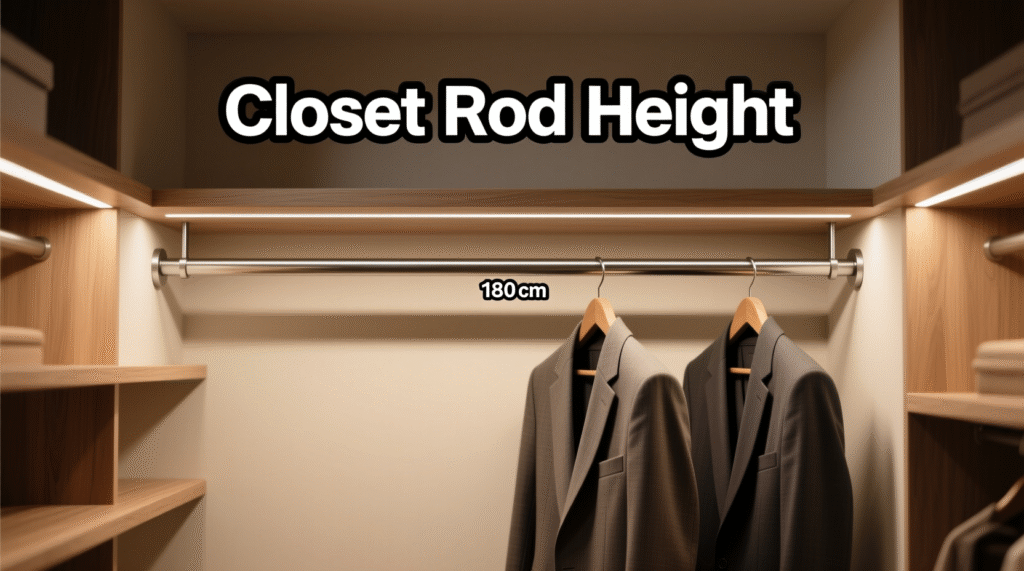
Standard closet installations typically position hanging rods at 36 inches from the floor for the lower rod in double-hung systems, or as a comfortable height for accessing everyday garments. This measurement accommodates most shirts, blouses, and folded pants while leaving adequate clearance above floor-level storage.
The 36-inch rod height works particularly well for children’s closets, allowing young ones to independently access their clothing while providing room for growth. Many closet organizers design systems around this height to maximize vertical space utilization in bedrooms and walk-in closets.
Professional closet designers often incorporate 36-inch measurements when creating custom storage solutions, using this height for specialized hanging areas, shelf installations, and modular components that can be reconfigured as needs change over time.
Organization Insight: Closet efficiency experts recommend the 36-inch height for “daily wear” items clothing you access most frequently. This position requires minimal reaching or bending, making morning routines more efficient while reserving higher and lower areas for seasonal or special-occasion items.
9. Fence Panel Width

Residential fencing often incorporates panels that measure 36 inches in width, particularly in vinyl, aluminum, and composite materials where standardized manufacturing reduces costs and simplifies installation. This dimension allows for efficient material usage while providing structural strength and visual appeal.
The 36-inch panel width works well with standard fence post spacing of 6 or 8 feet, allowing for either two or three panels per section depending on the specific design requirements. Manufacturers appreciate this standardization because it optimizes shipping and inventory management while providing contractors with predictable installation parameters.
From a design perspective, 36-inch panels create pleasing proportions that complement most residential architecture. The width is substantial enough to provide privacy and security while avoiding the fortress-like appearance that larger panels might create in suburban settings.
Construction Note: Fence contractors often prefer 36-inch panels because they’re manageable for one person to handle during installation while being large enough to minimize the number of connections required. This balance reduces labor costs and installation time while maintaining structural integrity.
10. Typical Countertop Depth

Kitchen countertops commonly extend 25 inches from the wall, but when you include the standard 1.5-inch overhang and account for the cabinet face frame, the total depth often reaches very close to 36 inches. This measurement has become crucial for kitchen planning and appliance selection.
The near-36-inch depth provides adequate workspace for food preparation while accommodating standard-size appliances and maintaining comfortable walking spaces in kitchen layouts. Designers use this dimension when planning kitchen islands, peninsula configurations, and galley kitchen arrangements.
This depth also influences the selection of kitchen accessories, from cutting boards designed to fit standard counters to small appliances that maximize the available space. Manufacturers design products with this standard depth in mind, ensuring compatibility with most kitchen configurations.
Kitchen Planning Fact: The relationship between counter depth and kitchen efficiency has been studied extensively by ergonomics researchers. The near-36-inch total depth allows most adults to comfortably reach the back edge of the counter while maintaining proper working posture, making it an optimal dimension for both function and comfort.
11. Large Computer Monitor Width

Ultra-wide computer monitors, particularly 34-inch curved displays, measure approximately 36 inches in width when accounting for their bezels and mounting hardware. These monitors have become increasingly popular for professional work, gaming, and creative applications.
The 36-inch width provides an immersive viewing experience equivalent to two standard monitors placed side by side, but without the visual interruption of bezels between screens. This seamless display area enhances productivity for tasks requiring multiple windows or applications simultaneously.
These monitors fit perfectly on standard 36-inch wide desks, creating a balanced workstation setup that maximizes screen real estate while maintaining proportional workspace aesthetics. The width also allows for optimal viewing distances in typical office and home office environments.
Technology Insight: Monitor manufacturers have gravitated toward the 36-inch width because it represents the practical limit for desktop displays before neck strain becomes a concern for users. Research indicates that this width allows users to take in the entire screen with minimal head movement, optimizing both comfort and productivity.
12. Standard Bookshelf Height

Many popular bookshelf designs, particularly those intended for living rooms and home offices, measure 36 inches in height. This dimension strikes an ideal balance between storage capacity and furniture scale, fitting comfortably in most residential spaces without overwhelming the room.
The 36-inch height allows for approximately four shelves with adequate clearance for most book sizes, including oversized art books and reference materials. This configuration maximizes storage efficiency while keeping frequently accessed items within comfortable reach for most adults.
Furniture manufacturers favor this height because it works well as a room divider, display surface, and storage solution without blocking sight lines or natural light flow through living spaces. The proportion integrates seamlessly with other furniture pieces and architectural elements.
Interior Design Perspective: The 36-inch bookshelf height has become a standard in furniture showrooms because it demonstrates versatility without committing to a specific room layout. Customers can visualize these pieces in various settings, from traditional libraries to modern open-concept homes, making them popular choices for both designers and homeowners.
Real-World Applications & Practical Measurement Tips
Understanding the 36-inch measurement extends far beyond memorizing a list of objects. This knowledge becomes practical when you’re furniture shopping, planning renovations, or working on DIY projects. Instead of carrying a tape measure everywhere, you can use your familiarity with 36-inch objects as reference points for quick estimates.
When shopping for furniture online, knowing that standard kitchen counters measure 36 inches helps you visualize how that new bar stool or kitchen island will fit in your space. Similarly, understanding that interior doors are typically 36 inches wide helps you determine whether large furniture pieces will navigate through your home successfully.
For home improvement projects, you can estimate distances using familiar 36-inch objects as guides. Need to determine if you have enough space for a new appliance? Use your knowledge of counter height to visualize the dimensions. Planning a garden bed? A yardstick provides the perfect 36-inch reference for spacing and layout.
Professional contractors and designers often develop mental libraries of common measurements, with 36 inches being among the most frequently referenced. This spatial intelligence speeds up planning, reduces measurement errors, and improves project outcomes across numerous applications.
Measuring Without a Ruler: Creative Techniques
When you don’t have measuring tools available, your knowledge of 36-inch objects becomes invaluable. A standard dollar bill measures approximately 6 inches, so six bills end-to-end equal 36 inches. Similarly, most credit cards measure about 3.5 inches, making roughly ten cards equivalent to the 36-inch measurement.
Human body measurements provide another reference system. For many adults, the distance from fingertip to fingertip with arms outstretched approximates their height, and for average-height individuals, half that span comes close to 36 inches. The distance from your elbow to your fingertips typically measures between 17-19 inches, so doubling this measurement provides a reasonable 36-inch estimate.
Common household items can serve as measuring tools when you understand their dimensions. Standard sheets of paper (8.5 x 11 inches) can be used creatively three sheets placed along their long edge plus a few inches equal 36 inches. Understanding these relationships transforms everyday objects into measuring instruments.
The Universal Appeal of 36 Inches
The prevalence of 36-inch measurements in our built environment isn’t coincidental it reflects centuries of human experience optimizing dimensions for comfort, functionality, and efficiency. From ancient building techniques to modern manufacturing standards, this measurement has proven its value across cultures and applications.
In an increasingly digital world, developing spatial intelligence through understanding common measurements becomes more valuable, not less. While we have apps that can measure distances through our phone cameras, nothing replaces the immediate understanding that comes from recognizing familiar dimensions in our environment.
The 36-inch measurement serves as a bridge between different systems of measurement and helps us navigate spaces more confidently. Whether you’re traveling internationally, shopping for imported goods, or working with people who use different measurement systems, your familiarity with these common 36-inch objects provides reliable reference points.
Understanding these measurements also enhances your ability to communicate about space and dimensions. Instead of struggling to explain sizes, you can reference familiar objects that others immediately recognize, making conversations about design, construction, or planning more effective and precise.
Conclusion: Embracing Spatial Intelligence
Recognizing 36-inch objects in your daily environment represents more than just measurement knowledge it develops your spatial intelligence and enhances your ability to navigate, plan, and create in the physical world. From the kitchen counter where you prepare meals to the door width that accommodates your furniture moves, these measurements shape your daily experiences in profound ways.
The twelve common 36-inch objects we’ve explored demonstrate how standardization in manufacturing and construction creates predictability and compatibility across different industries and applications. This consistency makes our lives easier, whether we’re designing a space, selecting equipment, or simply trying to determine if something will fit through a doorway.
As you move through your daily routine, take notice of the 36-inch dimensions around you. This awareness will enhance your spatial reasoning, improve your planning abilities, and provide you with valuable reference points for countless future situations. The investment in understanding these common measurements pays dividends in everything from home improvement projects to furniture selection to professional applications.
Here’s a challenge for you: Look around your current space and identify how many objects measure approximately 36 inches in one dimension or another. You might be surprised at how frequently this measurement appears in your environment. This exercise will reinforce your spatial awareness and help you internalize these reference points for future use. Whether you’re a homeowner, professional, or simply someone who appreciates understanding the world around them, this knowledge of 36-inch objects will serve you well in countless situations throughout your life.

James Harrington is a writer known for his compelling storytelling and diverse themes. His work blends creativity with thought-provoking ideas, captivating readers across genres. Through his website, DimensionsGo.com, he shares his latest projects, insights, and literary reflections, building a global community of readers and writers.

